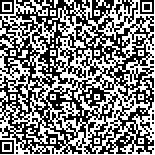下载中心
优秀审稿专家
优秀论文
相关链接
摘要

全球MODIS冰雪反照率产品在定量遥感中有着广泛应用,但由于该产品的业务化算法是建立在表征植被—土壤系统基础上的罗斯表层(RT)李氏稀疏互易核(LSR)的二向性反射分布函数(BRDF)模型(简称为RTLSR),因此该模型对冰雪的二向性反射及反照率的反演能力有待评估。本文基于地球反射极化和方向测量仪(POLDER)的多角度冰雪反射率数据,综合评估了RTLSR模型在表征冰雪二向反射及反演反照率等方面的能力。为量化评估结果,本研究基于渐进辐射传输(ART)模型,从POLDER冰雪数据中筛选出高质量数据,使用ART模型拟合的高质量结果作为参考,比较结果表明:(1)在表征冰雪方向性散射方面,RTLSR模型整体拟合精度较低。在1020 nm波段,其均方根误差(RMSE)最大可达到0.0498,相较于ART模型的拟合结果偏高了约53.70%;(2)在反演冰雪反照率方面,RTLSR模型与ART模型反演结果也存在差别,其决定系数为0.529,均方根误差为0.0333,偏差为-0.0274,基于RTLSR模型的反演结果低估了ART模型的反演结果。为了使核驱动模型能更准确地表征冰雪BRDF特征和反演反照率,该模型需要针对冰雪散射特点进行进一步的发展。
Snow/ice surface albedo is an important climate parameter because it governs the surface energy budget on the earth-atmosphere system. MODIS snow/ice albedo products, which are generated on the basis of a kernel-driven Rossthick-LisparseR (RTLSR) model, are extensively used in quantitative remote sensing community. However, the model is developed on the basis of the physics of soil-vegetation system. In theory, the scattering properties between the snow/ice and soil/vegetation systems are distinctly different, thereby causing potential problems in characterizing a Bidirectional Reflectance Distribution Function (BRDF) and albedo for snow/ice cover type using this operational model. In this study, we assess the ability of the operational RTLSR model in characterizing the BRDF and retrieving the surface albedo of snow/ice using Polarization and Directionality of the Earth's Reflectances (POLDER) BRDF data. To verify and compare BRDF/albedo for snow and ice using high-quality collected POLDER observations, we introduce an extensively used asymptotic radiative transfer (ART) model to estimate the BRDF/albedo surface with POLDER observations as a reference given the lack of in situ albedo observations. Results show that (1) the RTLSR model fits the POLDER observations with higher accuracy than the result derived using the ART model. The root mean square error (RMSE) reaches 0.0498 in the 1020 nm band, which increases by 53.70% in comparison with the result using the ART model. (2) The resultant albedos are significantly influenced by the inversion of the RTLSR model for the snow/ice cover type in comparison with the result using the ART model. The RMSE and bias between the two models reach 0.0333 and 0.0274, correspondingly, thus indicating a significant underestimation of surface albedos using the RTLSR model in comparison with the ART model. However, determination coefficient (R2) reaches 0.529, which indicates a high-level correlation between the RTLSR and ART models. Our findings show that the current operational RTLSR model cannot characterize the directional reflectance of snow/ice, thereby affecting the model's capability in estimating the surface albedo for snow/ice, and thus, this model must be modified. Such development can improve the inversion accuracy of surface albedos when this model is used as an operational algorithm for snow/ice cover type in the future.

